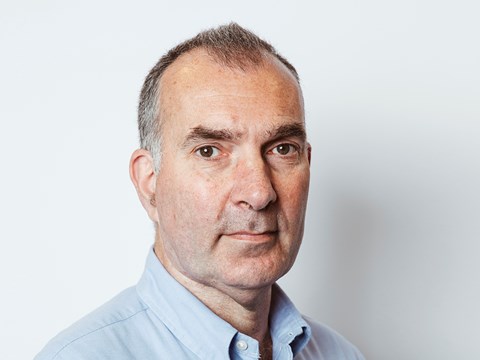2022 New Business opportunities down by one fifth but two-year trend remains positive
02 Feb 2023
Analysis of new business activity for 2022 shows a year-on-year market decline of 18% with only media increasing marginally by 4%.
Data analysed is only for completed reviews, with any outstanding pitches awaiting a result not included in the figures.
Victoria Fox, CEO at AAR observed “We recognise that 2021 was a post COVID bounce-back year for new business activity so it was unlikely this would continue at the same pace in 2022. However, agencies can take encouragement from a two-year trend that is overall positive when looking at the health of the new business market.”
|
Discipline |
% 12-month difference |
|
Total |
-18% |
|
Advertising/integrated |
-24% |
|
CRM/CX/Performance |
-6% |
|
Digital |
-9% |
|
Media |
+4% |
|
Discipline |
% two-year difference |
|
Total |
+20% |
|
Advertising/integrated |
+12% |
|
CRM/CX/Performance |
+55% |
|
Digital |
-4% |
|
Media |
+50% |
Source: AARnewbizmoves
Media
It is not surprising that media pitching continues to be buoyant and was the only discipline to record an increase in opportunities for both of the last two years.
Given the media cheque is one of the largest that companies will sign and changes in value and cost of services can have a material financial impact, media agency arrangements are subject to levels of scrutiny and governance that other aspects of marketing services do not face.
There is also a well-established cycle of international or global media reviews that come to market every year. In 2021 these included Audible (Amazon), ABInBev, BMW, Burberry, Clarins, Danone, Kimberly-Clark, LVMH, Mondelez Nike and Vodafone.
Add to this domestic pitches including Aldi, British Gas (Centrica) Direct Line, Molson Coors, MoneySupermarket, Tesco, TfL, Vitality and VirginMedia/O2 and it’s easy to see why media agencies continue to be busy with new business.
Advertising and Integrated
Advertising and Integrated opportunities were down by one quarter vs 2021, but still up by 12% when compared to 2020.
There was one less scale opportunity (£20m+ reported media spend) in 2022 from across multiple sectors – British Gas, Cabinet Office, Dreams, Morrisons and VirginMedia/O2.
Agencies on the CCS roster were particularly busy with integrated pitches taking place for The Cabinet Office, Department of Education, Electoral Commission, Historic England, National Highways, NHS Blood & Transplant, NHS England, The RAF & Royal Navy and Sport England.
The number of appointments made without a competitive pitch was down 10% year on year, indicating that there were fewer CMOs who were willing to appoint without some kind of comparative review.
CRM/CX and Performance
2021 recorded the biggest year on year growth in pitches across CRM/CX and Performance marketing at 55%. A decline of only 6% in 2022 still indicates an overall healthy growth across two years in this space for agencies to compete (albeit the absolute number of opportunities are not as significant as for Advertising and Integrated).
Significant brands that reviewed their CRM/CX agency arrangements included BT/EE, GWR, McCarthy & Stone, Waitrose, Samsung and VirginMedia/O2.
Digital
The continued long-term decline in stand-alone digital opportunities is reflective of the recognition that digital is baked into all marketing activity and the choice to separate it is increasingly redundant (with the exception of digital design and build requirements).
Brands that reviewed their digital agency arrangements include The Co-Op, Edrington Group, Jack Daniels and Reed.co.uk.
The reporting of digital only opportunities is likely to not tell the full story and we believe any digital brief will be part of a larger customer focused opportunity that will manifest itself across multiple channels and platforms: Paid for digital advertising, social media, YouTube, Instagram, TikTok, email marketing and the Metaverse, and more.
What, if anything can we learn from these latest figures?
Net new business opportunities continue to be a source of growth for agencies even though the market has shrunk by nearly one fifth compared to 2021.
The reasons why brands choose to go to market continue to be familiar - governance, statutory requirement, perceived poor agency service, a new requirement, or a change in direction, often introduced by a new CMO. These and other macro global economic and political factors will determine how busy the market is from year to year.
What appears to be changing in the agency marketplace is a more robust and critical lens through which potential opportunities are evaluated. Pressure on agency resources and genuine attention being given to staff well-being has resulted in more agencies turning down opportunities for which they don’t believe they have a serious chance of winning, particularly in the domestic market over which agencies have greater decision-making autonomy.
Separately, we think there’s another unwelcome aspect to a very large number of creative pitches that took place in 2022 that needs to be addressed. In many cases agencies were not told how many others had been invited to pitch or, where this was shared, which other agencies they were pitching against.
We believe transparency of such basic information alongside budget, commercial opportunity, pitch programme, decision makers and decision-making criteria should be forthcoming in all pitches as it will benefit agencies and brand owners alike. And we don’t see a disadvantage to brands in sharing such information as agencies will be able to make more informed decisions about which opportunities to pursue, meaning brands will not suffer agencies withdrawing from the pitch halfway through for what could have been avoidable reasons.
Something to consider for the Pitch Positive Pledge?
About The Author




